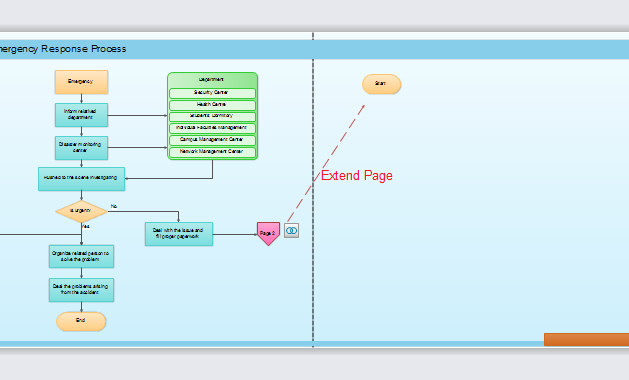
In the ever-evolving world of search engine optimization (SEO), staying ahead means adapting to new paradigms. One such shift is the rise of Entity-Based SEO, a strategy that moves beyond traditional keyword targeting to focus on the relationships between concepts, people, places, and things. As search engines like Google become more sophisticated, they’re prioritizing context over mere keyword matches. This article will explain what Entity-Based SEO is, why it matters in 2025, and how you can start implementing it today.
What Is Entity-Based SEO and Why It Matters
At its core, Entity-Based SEO is about optimizing content around entities—distinct, identifiable concepts or objects that have meaning within a specific context. These entities could be people, brands, locations, products, or even abstract ideas like “sustainability” or “blockchain.” Unlike traditional SEO, which focuses on matching exact keywords, Entity-Based SEO aims to help search engines understand the relationships between these entities and how they connect to user intent.
For example, if someone searches for “Apple,” a traditional SEO approach might target the keyword “Apple” in the hopes of appearing in results. But with Entity-Based SEO, the goal is to clarify whether the entity refers to the fruit or the tech company by using structured data, semantic clues, and contextual signals. This helps search engines deliver more accurate, relevant results.
According to Google’s own research, the Knowledge Graph—a massive database of interconnected entities—plays a critical role in how search results are generated. By leveraging this knowledge, businesses can improve their visibility in both organic and featured snippets.
How Entity-Based SEO Impacts SEO Performance
Entity-Based SEO doesn’t just change how search engines interpret content—it also has a direct impact on your website’s performance. Here’s how:
- Improved Relevance: By clearly defining and linking entities, your content becomes more relevant to user queries, increasing the chances of being ranked higher.
- Enhanced User Experience: When search engines understand your content better, they can serve it to users who are more likely to engage with it, leading to longer dwell times and lower bounce rates.
- Better Visibility in Featured Snippets: Entities are often used in rich snippets, making it easier for your content to appear as a top result.
- Stronger Topic Clusters: Entity-based content naturally aligns with topic clusters, helping you rank for broader, more complex search terms.
This approach also ties into other key SEO principles like E-E-A-T (Experience, Expertise, Authoritativeness, Trustworthiness) and Search Intent Alignment, making it a powerful tool for long-term success.
Step-by-Step Implementation Framework
To get started with Entity-Based SEO, follow this practical framework:
- Define or Audit the Current Situation
Begin by identifying the main entities relevant to your niche. Use tools like SEMrush, Ahrefs, or Google Trends to find high-traffic topics and related entities. For instance, if you’re writing about “digital marketing,” consider entities like “SEO,” “content marketing,” “social media,” and “conversion rate optimization.”
- Apply Tools, Methods, or Tactics
Once you’ve identified key entities, integrate them naturally into your content. Use schema markup to define entities (e.g.,Organization,Person,Product). Also, include internal links to other pages that cover related entities. This helps search engines understand the structure of your site and the relationships between different pieces of content.
Consider using semantic analysis tools like SurferSEO or Clearscope to identify related entities and ensure your content covers all relevant aspects.
- Measure, Analyze, and Optimize
Track how your content performs using tools like Google Analytics and Search Console. Look at metrics like organic traffic, dwell time, and click-through rate (CTR). If certain entities aren’t performing well, adjust your strategy by adding more context or linking to additional resources.

Real or Hypothetical Case Study

Let’s take a hypothetical example. Suppose a small e-commerce brand sells eco-friendly home products. Initially, their content focused on the keyword “eco-friendly products,” but they weren’t seeing much traffic. After switching to an Entity-Based SEO approach, they began targeting entities like “sustainable living,” “zero-waste lifestyle,” and “green home decor.” They also added schema markup for their products and linked to articles about environmental impact and recycling.
Within six months, their organic traffic increased by 40%, and their CTR improved by 25%. The content was now appearing in rich snippets, and the brand saw a noticeable increase in engagement and conversions.
Tools and Techniques for Entity-Based SEO
Here are some of the most effective tools and techniques for implementing Entity-Based SEO:
- Schema.org Markup – Helps define entities and improve rich snippet visibility.
- Google’s Structured Data Testing Tool – Ensures your schema is correctly implemented.
- SurferSEO – Uses semantic analysis to suggest related entities and optimize content.
- Ahrefs’ Content Explorer – Identifies high-performing content and associated entities.
- AnswerThePublic – Reveals common questions and related entities around a topic.
- Moz’s Link Explorer – Analyzes backlinks and helps identify authoritative entities in your niche.
By combining these tools, you can create a comprehensive strategy that aligns with how search engines process information today.
Future Trends and AI Implications
As AI continues to shape the future of search, Entity-Based SEO will only become more important. With advancements in Semantic Search, Voice Search, and Multimodal Search, search engines are becoming better at understanding context and relationships between entities.
For example, voice assistants like Google Assistant or Alexa rely heavily on entity recognition to provide accurate responses. In the near future, we may see even more emphasis on entity clustering, where search engines group related topics and entities to deliver highly personalized results.
To stay ahead, focus on building context-rich content that clearly defines and connects entities. This not only improves your SEO performance but also enhances user experience and builds trust with your audience.
Key Takeaways
- Entity-Based SEO focuses on optimizing content around distinct, identifiable concepts rather than just keywords.
- It improves relevance, user experience, and visibility in both organic and featured results.
- Tools like schema markup, semantic analysis, and structured data are essential for implementation.
- The future of SEO will depend on how well we understand and leverage entity relationships.
- Start by identifying key entities in your niche and integrating them naturally into your content.
If you’re ready to take your SEO strategy to the next level, it’s time to embrace the power of Entity-Based SEO. With the right approach, you can not only improve your rankings but also build a stronger connection with your audience in an increasingly intelligent search landscape.
Meta Title: What Is Entity-Based SEO? A Beginner’s Guide to Understanding Modern Search Optimization
Meta Description: Learn what Entity-Based SEO is, why it matters, and how to implement it effectively in 2025. Improve your search visibility and user engagement.
SEO Tags (5): Entity-Based SEO, Search Engine Optimization, Content Strategy, Semantic SEO, Structured Data
Internal Link Suggestions: Parameter #8: E-E-A-T in SEO, Parameter #12: Voice Search Optimization, Parameter #15: Schema Markup for SEO
External Source Suggestions: https://developers.google.com/search/docs/overview/understanding-schema-markup, https://support.google.com/websearch/answer/9165167?hl=en








